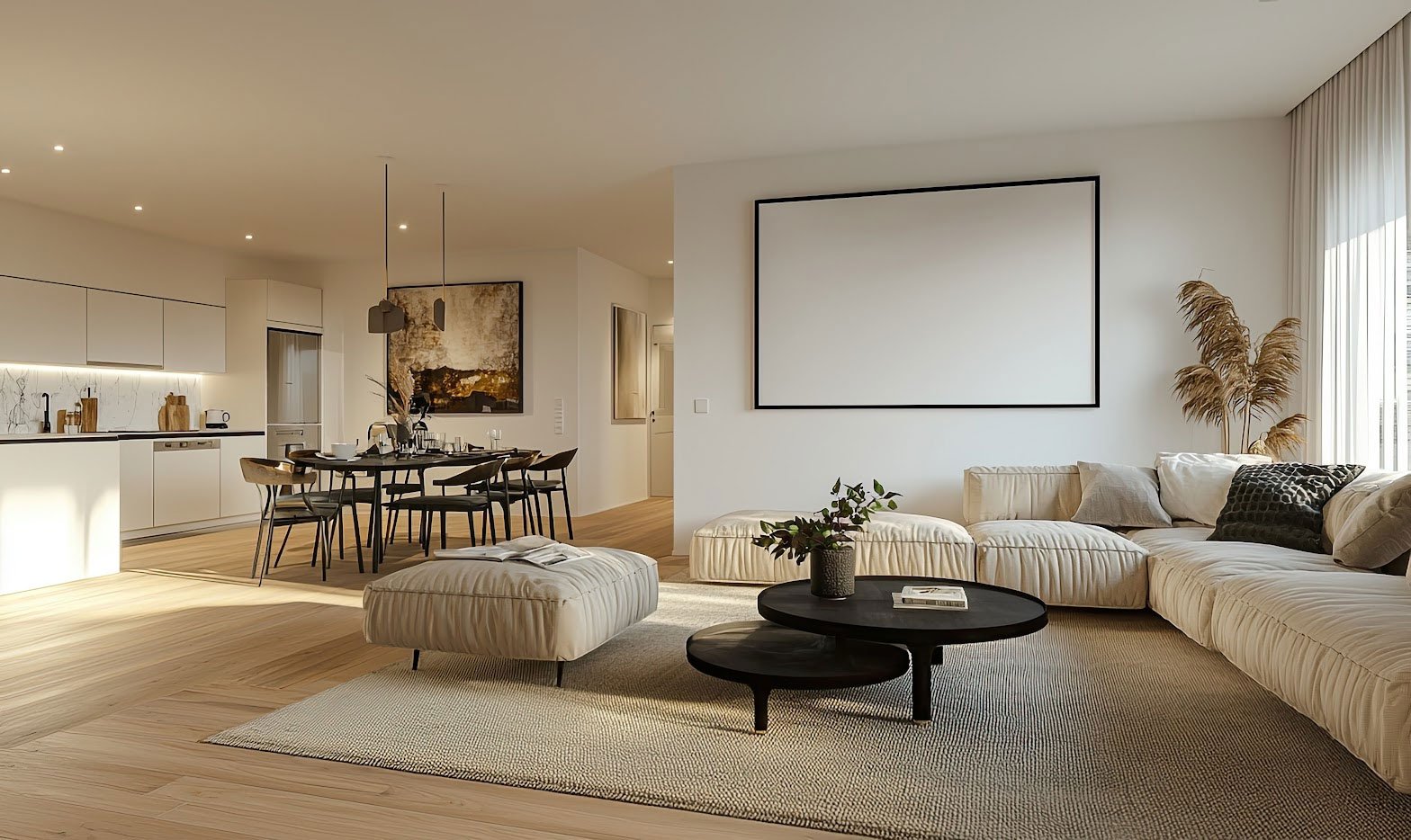
Picking the right colour for your home can be overwhelming. The colours you choose impact the mood, lighting and style of your home. But how do you ensure they complement your furniture and create a cohesive look?
Why Does Colour Choice Matter in Interior Design?
The colours you use shape the atmosphere of your home. Lighter shades make a space feel open and airy, while darker tones create warmth and cosiness. The right colours also improve your furniture, making it stand out or blend seamlessly with the theme of the room.
Beyond aesthetics, colour influences how a room functions. Bright, vibrant hues energise a space, making them ideal for offices or social areas. Soft, muted tones promote relaxation, which is perfect for bedrooms.
Lighting also plays a key role. A shade that looks perfect in a showroom may appear completely different in your home. Natural light makes colours look brighter, while artificial lighting can add warm or cool undertones.
How to Choose a Colour Scheme that Works for Your Home
1. Define Your Style
Before choosing colours, decide on the overall look you want. Do you prefer modern minimalism, cosy Scandinavian or bold and eclectic? Your colour choice should always align with your preferred style.
-
Modern styles often use neutral tones with bold accent colours
-
Scandinavian interiors feature light, airy shades with soft pastels
-
Industrial designs focus on dark, moody tones with metal finishes
2. Consider Natural Light
Lighting affects how colours appear:
-
North-facing rooms benefit from warm shades to prevent a dull look
-
South-facing rooms can handle cooler tones due to abundant natural light
-
Dimly lit rooms should stick to lighter hues to improve brightness
3. Use a Colour Palette Wheel
If you’re unsure where to start, use an online colour palette wheel to find harmonious shades. These wheels suggest complementary colours based on a base tone, making it easier to create a balanced palette.
4. Test Paint Samples
Colours can look different once applied. Paint small swatches on different walls and observe them throughout the day before making a final decision.
How Many Colours Should You Use in a Room?
A well-designed space typically follows the 60-30-10 rule:
-
60% Base Colour: Walls and large surfaces, neutral shades work best
-
30% Secondary Colour: Furniture, curtains or feature walls
-
10% Accent Colour: Decorative items such as cushions, lamps or artwork
This method keeps a space balanced while allowing for variety. However, some styles may use fewer or more colours depending on personal preference.
What Colours Match Popular Interior Styles?
Each design style has a colour palette that improves its aesthetic:
-
Scandinavian: Soft neutrals (white, beige, grey) with pastel accents
-
Industrial: Deep greys, black and earthy tones with metallics
-
Bohemian: Warm terracotta, mustard yellow, olive green and rich jewel tones
-
Modern Minimalist: Neutral shades such as white or charcoal with deep accent hues such as navy or emerald green
Sticking to a colour scheme that aligns with your chosen style ensures a cohesive and well-thought-out look.
Should All Rooms Be the Same Colour?
Consistency creates a seamless flow between rooms but that doesn’t mean every space needs to be identical. Instead of using the same colour everywhere, try:
-
Keeping a common base colour throughout the home
-
Varying accent colours in different rooms for personality
-
Using a cohesive palette to maintain harmony while allowing some variety
For example, a living room might have neutral walls with warm wood tones, while a bedroom could feature softer blues or greens for a relaxing vibe.
What Are the Best Accent Colours to Use?
Accent colours add character to a room without overwhelming it. Some great options include:
-
Mustard Yellow: Adds warmth to neutral spaces
-
Emerald Green or Navy Blue: Brings depth and sophistication
-
Blush Pink or Terracotta: Softens a space and adds a trendy touch
Use these accents sparingly through statement furniture, feature walls or decorative accessories.
How to Match Your Furniture to Your Colour Scheme
Your wall colours and furniture should complement each other to create a cohesive look. Consider these tips when coordinating colours:
-
Light walls work well with dark furniture for a modern contrast
-
Dark walls pair best with neutral or light furniture to avoid a heavy feel
-
Monochrome palettes with varying textures create an elegant, seamless design
If you’re planning to buy new furniture, it’s best to finalise your colour scheme first. That way, you can choose pieces that improve your space rather than clash with it.
At Lakeland Furniture, we offer a wide range of furniture in various colours, from subtle neutrals to bold statement pieces. Whether you need a new bar stool, dining chair or office chair, we have something to match your home’s design.
How to Choose the Perfect Colours for Your Home
Picking the right colours for your home involves balancing aesthetics, function and mood. By considering your style, lighting and furniture choices, you can create a space that feels both stylish and comfortable.
Looking for furniture to complement your new colour palette? From barstools to dining chairs, Lakeland Furniture has a variety of styles and colours to complete your home’s look.
 Chat with us on WhatsApp
Chat with us on WhatsApp


Comments